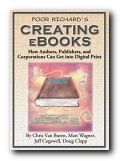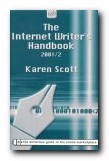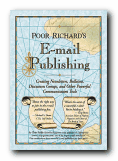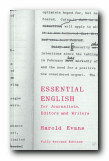What is editing?
Editing is the final stage of the writing process. It takes place just before your work is due to be submitted. It involves the detailed inspection of your text with a view to regularising its spelling, punctuation, grammar, and even typographical layout.
In the world of publishing, this stage is called ‘proof-reading’. It is the point at which you check that all your details are correct, and you examine the document very closely for internal consistency prior to releasing it into public view.
Editing is a process of checking your work very carefully in order to –
- remove any spelling mistakes
- check your grammar
- make your punctuation consistent
- re-write any clumsy expressions
Editing methods
The degree to which your text needs to be closely edited will depend upon the nature of the of writing. A spelling mistake might be tolerated in a student essay, but in a report written for the public it would look very bad indeed.
The best way to edit your writing is to split the task into a number of separate stages. Edit for just one feature at a time. Go through the work checking your spelling, then go back again to check grammar – and so on. Use the list of features below as a guide.
This is because it is difficult (and very tiring) to hold all these issues in your head at the same time. You have a choice of doing this on a computer screen or on paper. Both methods have advantages and disadvantages.
Editing on screen
The major advantage of editing your work on screen is that you can make as many changes as you wish. The work is always up to date, in its very latest version. Another advantage is that you can see immediately the effect of any changes you make.
Spelling-checkers and even grammar-checkers are now built in to most text editors. You can use FIND and REPLACE to make global changes automatically. For instance, if you have spelled someone’s name ‘Murray’ throughout a document, then discovered it’s actually spelled ‘Murry’, use FIND/REPLACE, and select REPLACE ALL.
Don’t forget to SAVE your document after each change is made.
The only disadvantage of editing on screen is that you will loose earlier versions of your work unless you make a deliberate effort to save them separately.
![]() See more on Editing on screen and paper
See more on Editing on screen and paper
Editing on paper
Some people prefer to edit on paper, for a number of very good reasons:
- mistakes are easier to spot
- it’s possible to have an overview
- it looks more like the finished product
- it creates a psychological distance from the text
Many people claim that there is a different between writing with a pen and with a keyboard. You can also see the original text, even after you have made an editing change.
The biggest disadvantage of editing on paper is that you have to re-type all changes into your original document.
![]() See more on Editing on screen and paper
See more on Editing on screen and paper
Spelling
Mistakes in spelling are easy to spot, and they always create a very bad impression. Readers of your work are more likely to regard spelling mistakes as a sign of poor writing than any other feature.
It’s worth doing a spelling check twice during the editing process. Once before you begin editing, and then again after you have finished. The reason for this is that you might have introduced new typos and mistakes during the editing process.
You need to decide on alternative or English and American spellings of words such as analyze/analyse, judgement/judgment, and meter/metre. Make the spelling consistent throughout your document.
Check in particular on the spelling of names, places, foreign terms, and technical jargon.
![]() See more on spelling
See more on spelling
Punctuation
Check that you have been consistent throughout your document in using the common marks of punctuation – the comma, semicolon, colon, and full stop.
If you are not sure about the use of the semicolon and the colon, leave them out. It’s possible to punctuate accurately using only the comma and the full stop.
What follows is an example of an entire paragraph which has been punctuated using only the comma and the full stop. [The subject is the structure of a paragraph.]
The central thought or main controlling idea of a paragraph is usually conveyed in what is called a topic sentence. This crucial sentence which states, summarises or clearly expresses the main theme, is the keystone of a well-built paragraph. The topic sentence may come anywhere in the paragraph, though most logically and in most cases it is the first sentence. This immediately tells readers what is coming, and leaves them in no doubt about the overall controlling idea. In a very long paragraph, the initial topic sentence may even be restated or given a more significant emphasis in its conclusion.
![]() See more on punctuation
See more on punctuation
Sentences
Make your sentences as short, simple, and direct as possible. This will always improve the quality of your writing. Follow the pattern Subject – Verb – Object
The table has metal legs.
Some people like raw vegetables.
My dissertation considers the biology of frogs.
Avoid starting sentences with conjunctions such as Although, Because, and Again. These often lead to grammatical problems of expression.
If any sentence in your document seems vague or problematical – re-write it, or split it up into two or more separate statements.
Avoid long sentences composed of one clause after another linked by and, commas, or conjunctions such as although, however, and because.
![]() See more on sentences
See more on sentences
Paragraphs
The definition of a paragraph is that it deals with just one topic. It introduces the topic, explains its relevance to the subject being discussed, then comes to some form of conclusion. It might end with a statement that links the argument to the next paragraph.
The following is an example of a successful paragraph.
John Skelton was an East Anglian: he was a poet, also a clergyman, and he was extremely strange. Partly strange because the age in which he flourished – that of the early Tudors – is remote from us, and difficult to interpret. But he was also a strange creature personally, and whatever you think of him when we’ve finished – and you will possibly think badly of him – you will agree that we have been in contact with someone unusual.
Check for long paragraphs in your writing. If any go beyond one topic, split them up into separate paragraphs.
Avoid very short paragraphs. These can be used for dramatic effect – but only in journalism and creative writing.
![]() See more on paragraphs
See more on paragraphs
Titles and sub-titles
Make sure that any titles or sub-titles in your writing are explanatory and consistent. They should identify the subject as briefly as possible.
Check for consistent use of capital letters. You might wish to use the traditional convention of capitalising only the most important words:
The Analysis of Amino-acids with a Spectrometer
Alternatively, the modern convention is to capitalize only the first word:
The analysis of amino-acids with a spectrometer
Notice that there is no need to punctuate titles with a full stop at the end. These are titles, not complete grammatical sentences.
Structure
The structure of a document is closely related to its purpose. But the structure of some documents may not become apparent until you have finished writing. Be prepare to use CUT and PASTE to re-order your topics and arguments to produce the best arrangement of its parts.
The best structure will depend upon the type of document. Its parts could be arranged using –
- logical progression
- increasing significance
- equal significance
- chronological order
- narrative sequence
- category groupings
![]() See more about structure here
See more about structure here
© Roy Johnson 2012
More on How-To
More on literary studies
More on writing skills
 Creating E-books
Creating E-books The Internet Writer’s Handbook
The Internet Writer’s Handbook Email Publishing
Email Publishing
